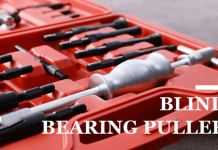In today’s fast-paced agricultural landscape, efficiency and versatility are key to maximizing productivity. Mechanization has revolutionized farming practices, and among the essential tools helping farmers meet modern demands is the skid steer loader. These compact machines are transforming how agricultural tasks are performed, allowing for greater speed, precision, and flexibility. This blog explores the pivotal role skid steer loaders play in modern agriculture and why they are becoming indispensable on farms of all sizes.
What is a Skid Steer Loader?
A skid steer loader is a small, powerful, and highly maneuverable machine designed for a wide variety of tasks. Characterized by its compact size and unique steering system—where the wheels or tracks on each side can operate independently—this machine can turn within its own footprint. This makes it perfect for working in confined spaces like barns, tight fields, or orchards.
Skid steer loaders are also incredibly versatile. Their front-mounted lift arms allow operators to easily switch between a vast array of attachments, such as buckets, forks, augers, and more, tailored to different agricultural applications.
Advantages of Using Skid Steer Loaders in Agriculture
One of the greatest advantages of skid steer loaders is their compact size, which allows them to navigate tight farm environments that larger equipment cannot. This makes them ideal for working in greenhouses, small farms, or alongside livestock.
The versatility of these machines is unmatched. By simply swapping attachments, skid steer loaders can perform a multitude of tasks without needing several different machines. This versatility not only boosts productivity but also reduces the need for manual labor, cutting down physical strain on farmers.
Moreover, skid steer loaders enable tasks to be completed faster and more efficiently, which can lead to significant time and cost savings during busy farming seasons.
Common Agricultural Applications of Skid Steer Loaders
Skid steer loaders excel in a variety of farming tasks, including:
- Soil Preparation: They can grade and level land, helping prepare fields for planting with precision.
- Material Handling: Moving feed, fertilizer, hay bales, and other heavy materials becomes quicker and safer.
- Manure Management: Cleaning out livestock pens and transporting manure is easier with the right attachments.
- Digging and Trenching: Skid steers equipped with augers or trenchers can install irrigation systems or plant trees.
- Snow Removal and Maintenance: In colder climates, they clear snow and keep farm pathways accessible, while also helping with general upkeep.
Technological Innovations Enhancing Skid Steer Loaders in Agriculture
The integration of modern technology has elevated skid steer loaders’ functionality in agriculture. GPS-guided systems and automation features allow for precision work, reducing waste and improving crop outcomes.
Telematics and remote monitoring give farmers real-time data on machine performance and maintenance needs, helping avoid costly downtime. Advances in fuel efficiency and emissions controls are also making these machines more environmentally friendly. Meanwhile, enhanced safety features and operator comfort designs contribute to safer, longer workdays.
Case Studies / Real-World Examples
Many farms worldwide have embraced skid steer loaders and seen tangible benefits. For example, a mid-sized dairy farm reported cutting their barn cleaning time by half after switching to a skid steer with a manure bucket attachment. Another orchard used skid steers with specialized forks to speed up tree planting and harvesting, boosting seasonal productivity.
These examples highlight how skid steer loaders can adapt to various agricultural settings and deliver measurable improvements.
Choosing the Right Skid Steer Loader for Your Farm
Selecting the right skid steer loader depends on your farm’s specific needs. Consider the skid steer loader’s weight, size, horsepower, hydraulic flow capacity, and attachment compatibility. Smaller farms may prioritize compactness and fuel efficiency, while larger operations might require higher lifting power and advanced features. Brand like AHM offers models tailored to agricultural use, each with unique strengths and options.
Maintenance Tips for Longevity and Performance
To keep your skid steer loader running smoothly:
- Perform regular inspections of hydraulic lines, tires or tracks, and attachment connections.
- Clean and lubricate attachments frequently.
- Follow seasonal maintenance routines, such as engine checks before winter or planting seasons.
- Address minor repairs promptly to prevent bigger issues.
Proper maintenance ensures your investment serves your farm reliably for years.
Conclusion
Skid steer loaders have become a cornerstone of modern agriculture, offering unmatched versatility, efficiency, and ease of use. From soil preparation to material handling and farm maintenance, these machines empower farmers to work smarter, not harder. Whether you manage a small family farm or a large commercial operation, incorporating skid steer loaders into your equipment lineup can significantly enhance productivity and reduce labor demands.









































